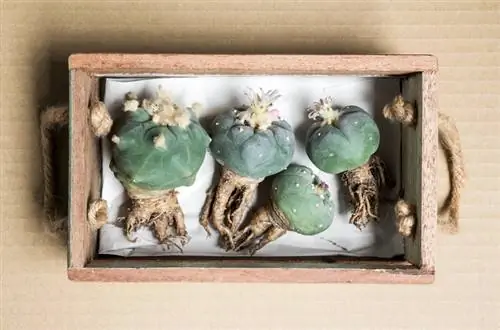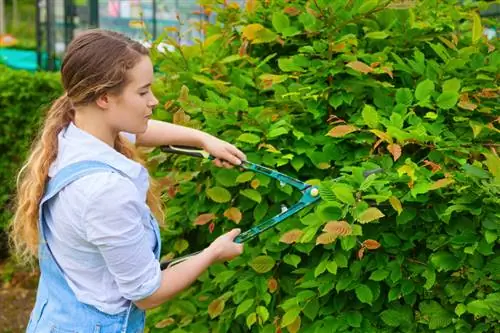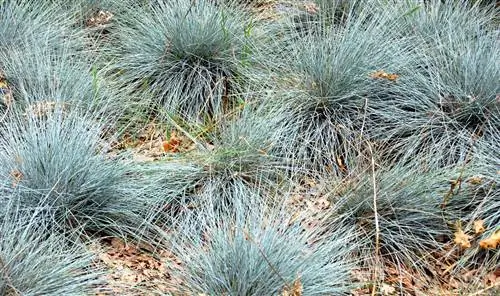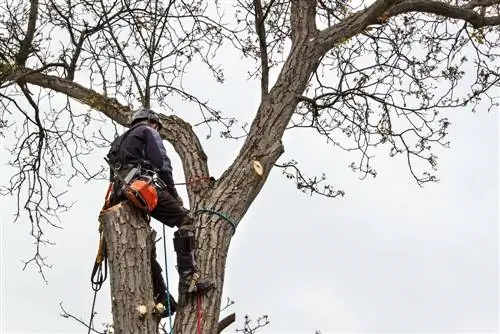- Author admin [email protected].
- Public 2023-12-16 16:46.
- Last modified 2025-06-01 06:02.
When caring for cacti, the roots are rarely the focus. If, on the other hand, changing to a new pot is on the agenda, cactus gardeners ask themselves whether root strands that are too long or a dense network of roots can be cut. Read the answer here with tips on how to proceed correctly.
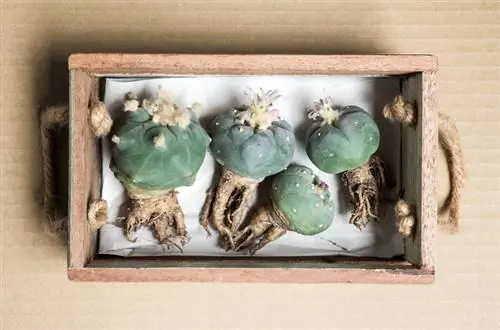
Can you cut the roots of cacti?
Should cactus roots be cut? Normally, cutting is not advisable as roots are the lifelines of the plant. Exceptions are dead roots, which can be carefully removed. Otherwise you should leave the roots unpruned.
Cutting is allowed - it is not advisable
Roots are the lifelines of all plants. Cacti are no exception in this regard. The root system usually consists of shallow or deep main roots that are equipped with a dense network of fine and hairy roots. Through this route, water and nutrients enter the ducts where they are processed.
Hairy roots on cacti usually only live for a few hours or days. The lifespan of fine roots is also very limited. Numerous cactus species shed their delicate roots in dry conditions and regrow them when necessary. Intervening in this cycle with scissors requires careful consideration and should only be done in an emergency.
Cutting cactus roots - this is what you should pay attention to
If you notice dead roots when repotting, this is one of the rare cases for pruning. In order to keep the stress on the cactus low, the following procedure has proven itself in practice:
- Freshly grind and disinfect cutting tools
- Cut off dead roots down to he althy tissue
- Sprinkle cuts with charcoal powder
- Let dry in a shady location for 3 to 4 days
After you have potted the cactus, it should recover from the strain in a partially shaded, warm location. Only water the plants for the first time after 2 to 3 weeks.
Beet roots or shallow main roots should be spared from being cut. Small species such as Yavia cryptocarpa or Blossfeldia liliputana do not survive this procedure, nor do Astrophytums up to 150 cm in size.
Tip
The right cut provides valuable help so that cuttings take root. When cut straight, the strong outer skin contracts and reduces the possible growth area in the juicy, fleshy inner tissue. By cutting a cutting conically at the base, you create a cylinder from which the delicate roots can sprout in abundance.

